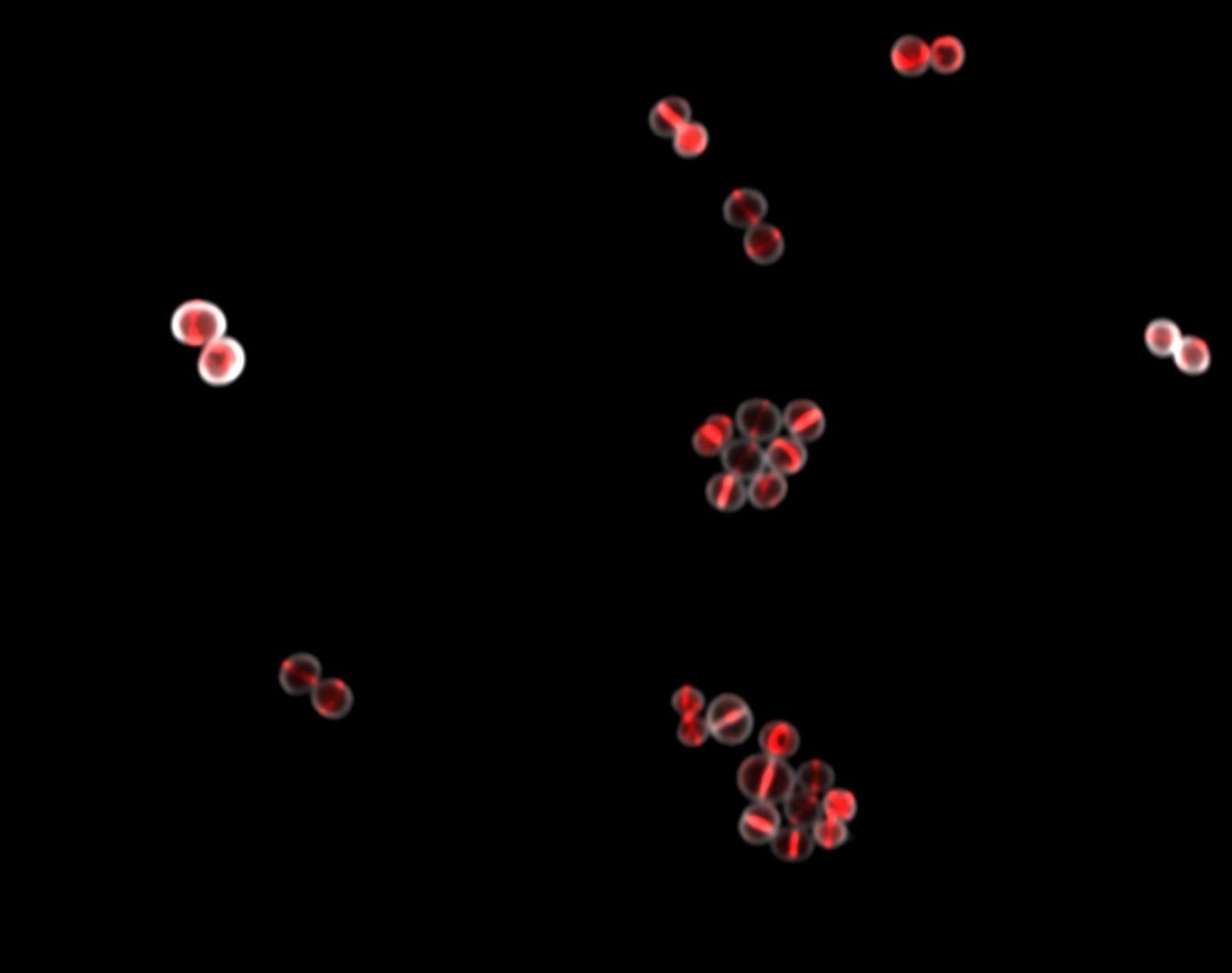It is still unclear how antibiotics work to destroy bacteria. This knowledge, however, is required for the development of new antibiotics. That is exactly what is required because bacteria are becoming increasingly resistant to existing antibiotics.
 Bacterium Staphylococcus aureus under the microscope: Red fluorescent cell division protein FtsZ assembles a so-called Z-ring in the center of the cell. Image Credit: © University of Bonn/Dominik Brajtenbach.
Bacterium Staphylococcus aureus under the microscope: Red fluorescent cell division protein FtsZ assembles a so-called Z-ring in the center of the cell. Image Credit: © University of Bonn/Dominik Brajtenbach.
Investigators from the University Hospital Bonn (UKB) and the University of Bonn used high-performance microscopes to investigate the effects of different antibiotics on Staphylococcus aureus cell division. They discovered that the biosynthesis of peptidoglycan, a central component of the bacterial cell wall, is the driving force throughout the cell division process.
They also clarified how various antibiotics block cell division in a matter of minutes. The findings were recently published in the journal Science Advances.
The bacterial cell wall helps unicellular organisms keep their shape and integrity. Cell wall synthesis is essential for bacterial growth: the cell division protein FtsZ forms the so-called Z-ring in the center of the cell, kicking off the division process. A new cell wall is formed there, with peptidoglycan as the primary component. This constriction results in the formation of two identical daughter cells.
Fluorescent proteins in Staphylococcus aureus under the microscope
The UKB research team, guided by Fabian Grein and Tanja Schneider, and the University of Bonn team, headed by Ulrich Kubitscheck, Professor of Biophysical Chemistry, chose Staphylococcus aureus, one of the most threatening human pathogenic bacteria, as the model organism for their research. The study focused on how antibiotics that inhibit peptidoglycan synthesis affect cell division.
We found a rapid and strong effect of oxacillin and the glycopeptide antibiotics vancomycin and telavacin on cell division. The cell division protein FtsZ served as a marker here and we monitored it.”
Jan-Samuel Puls, PhD Student, Institute of Pharmaceutical Microbiology, University Hospital Bonn
FtsZ was fluorescently labeled alongside other proteins for this purpose. The scientists then used super-resolution microscopy to assess the impact on individual living bacterial cells over time. They developed an automated image analysis system for microscopy images, allowing them to rapidly analyze all cells in the sample under study.
Staphylococcus aureus is only about one micrometer, which is one-thousandth of a millimeter. This makes microscopy particularly challenging.”
Dr Fabian Grein, Junior Research Group Leader, Institute of Pharmaceutical Microbiology, University Hospital Bonn
Dr Fabian Grein is also a scientist at the German Center for Infection Research (DZIF).
Antibiotic effect on cell wall biosynthesis machinery inhibits cell division immediately
The Bonn researchers discovered that the formation of peptidoglycan is the driving factor during the whole cell division process. Earlier, it was thought that peptidoglycan synthesis was only required during a specific stage of this process.
The researchers demonstrated that glycopeptide antibiotics hinder cell wall assembly in Staphylococcus aureus quickly and dramatically affect cell division. Furthermore, they detailed the specific role of essential penicillin-binding protein 2 (PBP2), which connects cell wall components, in cell division. The β-lactam antibiotic oxacillin prevents this protein from properly localizing.
This means that PBP2 does not get to the place where it is needed. As a result, the cell can't divide. Importantly, this all happens immediately after the antibiotics are added. So the first cellular effects, which have not been studied very intensively so far, are crucial.”
Dr Fabian Grein, Junior Research Group Leader, Institute of Pharmaceutical Microbiology, University Hospital Bonn
As a result, given the alarming rise in antibiotic resistance around the world, he hopes that the results of the study would provide a deeper understanding of how these agents work at the cellular level, and thus be a key element in the development of new antibiotics.
Source:
Journal reference:
Puls, J.-S., et al. (2023). Inhibition of peptidoglycan synthesis is sufficient for total arrest of staphylococcal cell division. Science Advances. doi.org/10.1126/sciadv.ade9023.